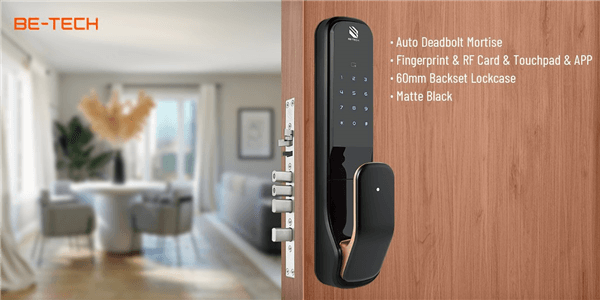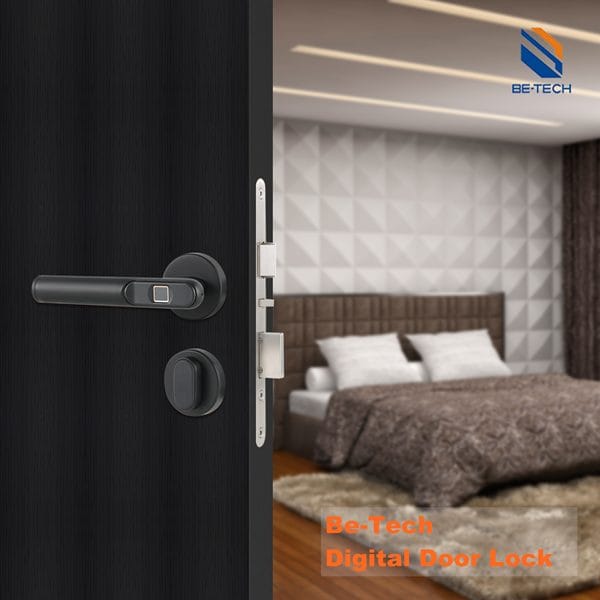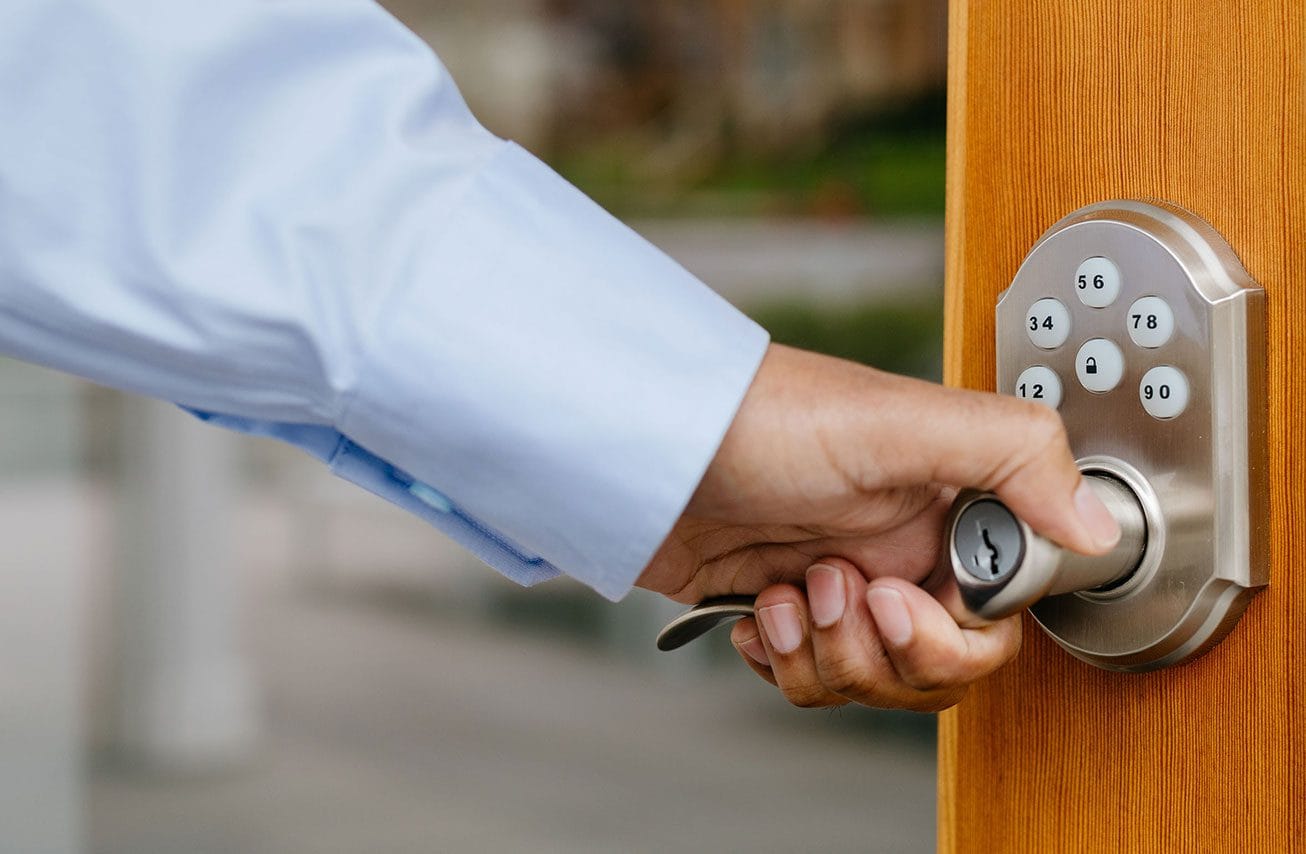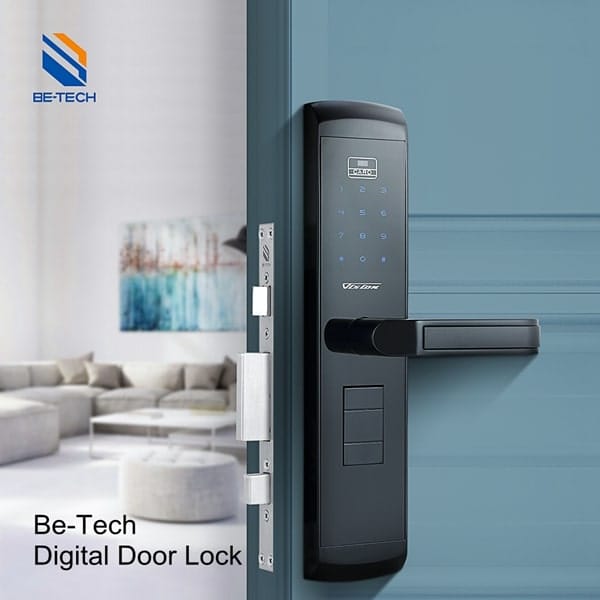In today’s fast-paced world, where security is paramount, fingerprint door locks have emerged as a game-changer, offering both convenience and peace of mind. With their biometric technology, these locks eliminate the need for traditional keys, ensuring that only authorized individuals can gain access. However, with the plethora of options available in the market, choosing the right fingerprint door lock can be a daunting task. This comprehensive guide will empower you to make an informed decision and unlock the best fingerprint door lock for your home in 2024.
Why Fingerprint Door Locks are Essential for Hotel Security
Fingerprint door locks represent a transformative advancement in hotel security, offering unparalleled protection against unauthorized access. Unlike traditional locks that can be easily picked or bumped, biometric technology ensures that only registered fingerprints can unlock doors, significantly reducing risks associated with lost or stolen keys.
Key Benefits for Hotels:
- Enhanced Security: Biometric locks provide a virtually impenetrable barrier against break-ins, ensuring guest safety at all times.
- Convenience for Guests: Guests no longer need to worry about carrying keys or cards. Their unique fingerprints serve as their access credentials, streamlining the check-in process.
- Operational Efficiency: These locks integrate seamlessly with hotel management systems, allowing staff to monitor access logs and manage room entries efficiently.
- Easy Installation and Maintenance: Designed for quick installation, fingerprint locks require minimal maintenance compared to traditional locking systems.
By adopting fingerprint door locks, hotels can elevate their security protocols while enhancing guest satisfaction through modern technology. This innovative solution not only meets the growing demand for secure accommodations but also aligns with the industry’s shift towards smart technology integration.
Choosing the Right Fingerprint Lock for Your Hotel
When selecting the ideal fingerprint door lock for your hotel, it’s essential to consider specific requirements tailored to hospitality settings. Start by measuring the door thickness and backset (the distance from the door edge to the center of the lock hole) to ensure a perfect fit.
Key Considerations:
- Door Material: Assess whether your doors are made of wood, metal, or glass, as this will influence your choice of locking system.
- Security Level Required: Determine if you need a lock suitable for high-security environments or standard commercial use.
Comparing Popular Fingerprint Lock Models
The market offers various fingerprint lock models designed specifically for hotels. Here’s a quick comparison of some popular options:
- Fingerprint + RFID Card + Touchpad Locks (e.g., Be-Tech Locks I7A6FMTW)
- Ideal for environments requiring multiple access methods.
- Key Features:
- Stores up to 100 fingerprints
- Supports up to 50 RFID cards/fobs
- Touchpad for PIN code entry
- Tamper alarm and low battery alert
- Fingerprint + RFID Card Locks (e.g., Be-Tech Locks H3A5FMTL)
- Perfect for hotels seeking simplicity in access control.
- Key Features:
- Stores up to 100 fingerprints
- Supports up to 50 RFID cards/fobs
- Tamper alarm and low battery alert
- Reversible handle for left or right-hand doors
- Fingerprint-Only Locks
- Offers a streamlined solution focused solely on biometric access.
- Key Features:
- Stores up to 100 fingerprints
- Tamper alarm and low battery alert
- Auto-lock and auto-unlock functions
- Sleek design suitable for modern hotels
When evaluating models, consider factors such as storage capacity for fingerprints, battery life, and additional features like tamper alarms or remote access capabilities.
Purchasing Options: Online vs. Local Stores
Fingerprint door locks can be sourced from various retailers including online platforms and local hardware stores. While online retailers often provide a broader selection at competitive prices, it’s crucial to purchase from reputable sellers with positive reviews. Local stores offer the advantage of hands-on assistance and professional installation services tailored to hotel needs.
Installation Considerations for Hotel Fingerprint Door Locks
Professional vs. DIY Installation
When selecting a fingerprint door lock for your hotel, understanding the installation process is crucial. While some locks are designed for DIY installation, many require professional assistance—especially for complex setups or commercial applications. Professional installation guarantees:
- Proper alignment
- Seamless integration with existing security systems
- Expert guidance on optimal lock placement and settings
At Be-Tech, we offer professional installation services tailored specifically for hotels. Our certified technicians are trained to handle various lock models and door types, ensuring a secure and reliable installation that meets your hotel’s unique needs.
Lock Body Material: Weighing the Pros and Cons
The material of your fingerprint door lock significantly impacts its durability and security. Here’s a breakdown of common materials used in hotel locks:
- Stainless Steel
- Pros:
- Exceptional corrosion resistance
- Superior impact strength against forced entry
- Modern appearance that complements various door styles
- Cons:
- Higher cost compared to other materials
- Heavier weight may require additional reinforcement
- Pros:
- Aluminum Alloy
- Pros:
- Good corrosion resistance
- Lightweight construction simplifies installation
- More affordable than stainless steel
- Cons:
- Less effective in extreme weather conditions
- Susceptible to denting if not maintained properly
- Pros:
- Zinc Alloy
- Pros:
- Lowest cost option among materials
- Suitable for indoor applications
- Cons:
- Prone to corrosion in humid environments
- Limited impact resistance makes it vulnerable to forced entry
- Pros:
Intelligent Alarm Systems: Enhancing Security
A high-quality fingerprint door lock should feature an intelligent alarm system that alerts you to unauthorized access attempts or low battery levels. Key features to consider include:
- Tamper Alarms: Triggered during physical tampering attempts.
- Low Battery Alerts: Notify you when battery life is running low.
- Motion Sensors: Detect movement near the lock and trigger an alarm if unauthorized activity occurs.
- Remote Monitoring: Allows real-time alerts and monitoring via smartphone or connected devices.
Anti-Lock Technology: Preventing Lockouts
Preventing accidental lockouts is essential for guest satisfaction. Anti-lock technology automatically unlocks the door from the inside even if it has been inadvertently locked. Features may include:
- Auto-Unlock: Automatically unlocks when closing from inside.
- Manual Override: A button or lever allows manual unlocking.
- Emergency Key Override: A backup key option for power failures or emergencies.
User-Friendly Free Handle Designs
Fingerprint door locks with free handle designs improve safety for children and elderly guests by minimizing injury risks during operation. Consider ergonomics, ease of use, and compatibility with your hotel’s decor when selecting handles.
By focusing on these aspects during your selection process, you can enhance your hotel’s security while providing a seamless experience for guests. Trust Be-Tech’s expertise in fingerprint door locks to meet your hotel’s unique requirements effectively.
Expert Insights and User Testimonials
To further enhance the credibility and depth of this guide, we’ve incorporated insights from industry experts and user testimonials:
“As a locksmith with over 20 years of experience, I can attest to the importance of choosing the right fingerprint door lock,” says John Smith, owner of ABC Locksmith Services. “A high-quality lock not only provides security but also offers peace of mind, knowing that your home or business is protected.”
Jane Doe, a satisfied customer, shares her experience: “After researching various options, I decided to go with a Be-tech Locks fingerprint door lock for my home. The installation process was straightforward, and the lock has been a game-changer in terms of convenience and security. I no longer have to worry about losing my keys or unauthorized access.”









